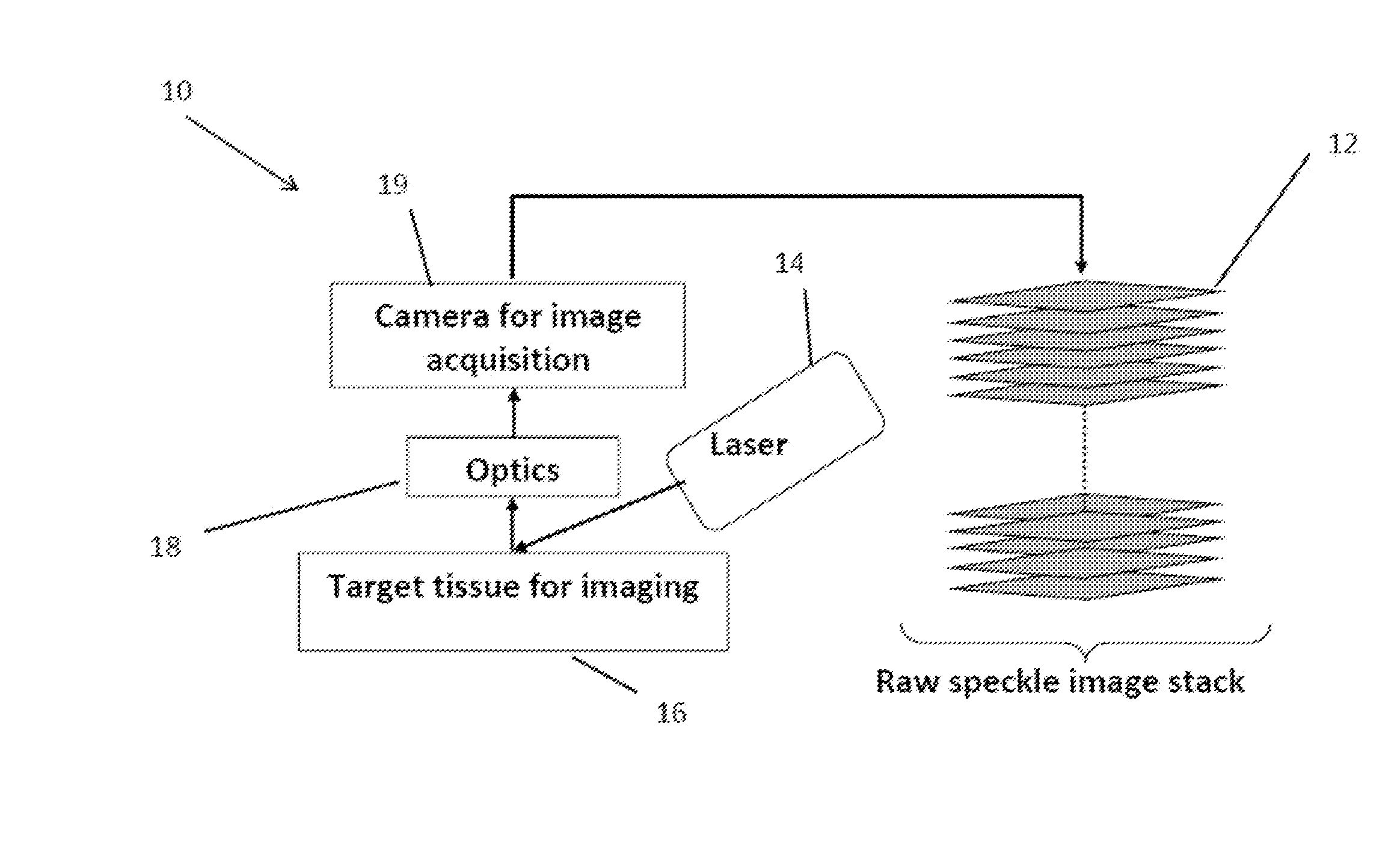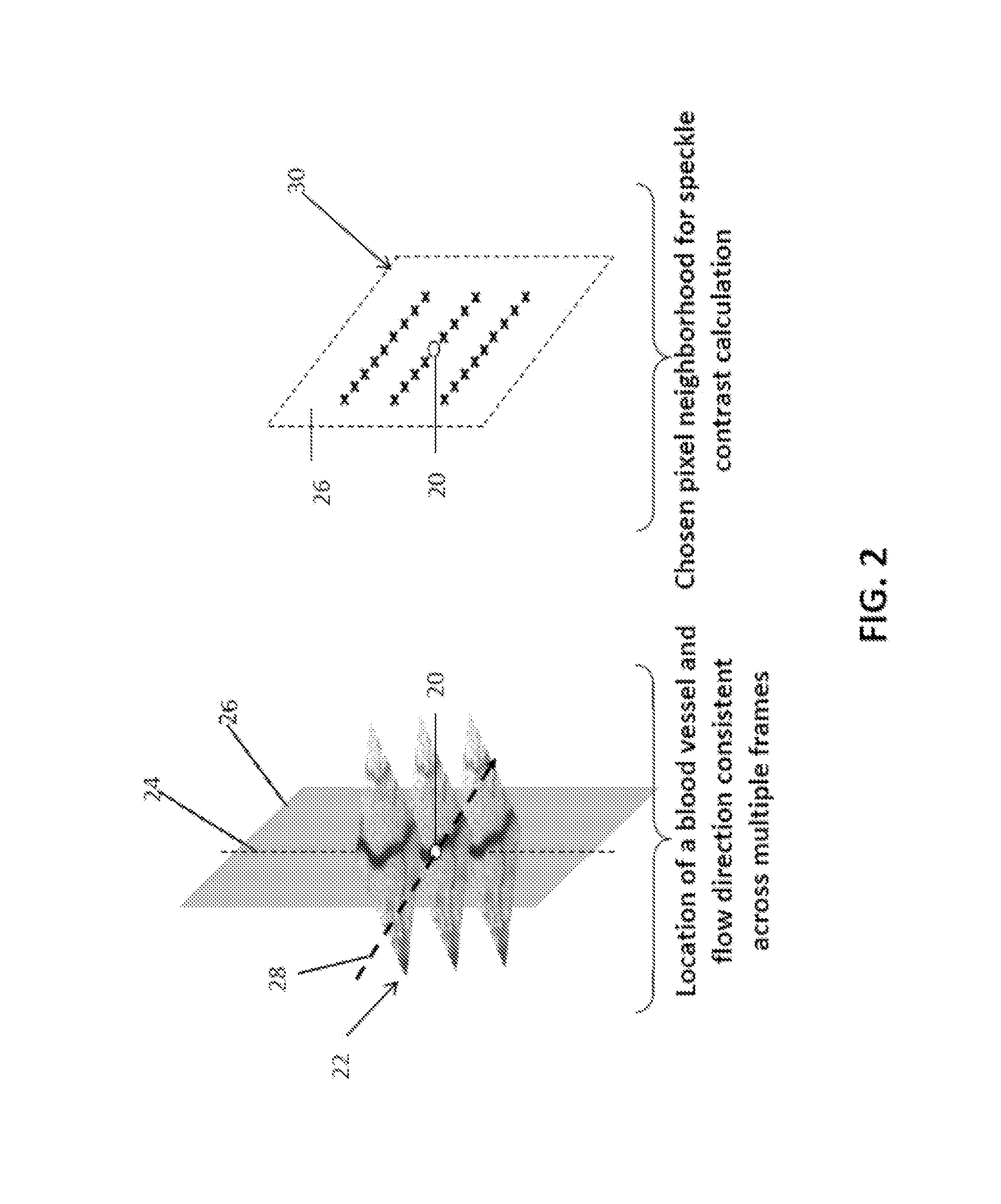Anisotropic processing of laser speckle images
a laser speckle and anisotropic processing technology, applied in the field of medical imaging, can solve the problems of confounded accurate representation of blood velocity, interference pattern of speckles, and coherent illumination on living tissu
- Summary
- Abstract
- Description
- Claims
- Application Information
AI Technical Summary
Benefits of technology
Problems solved by technology
Method used
Image
Examples
example
[0046]The following discussion is included merely by way of example. It is provided to illustrate the methods and system set forth and discussed above. This example, therefore, is not meant to be considered limiting to the scope and application of the methods and systems described above. Further, any application know to or conceivable by one of skill in the art could also be used with the above described methods and systems.
[0047]As an exemplary embodiment, the anisotropic laser speckle contrast imaging (aLSCI) invention was implemented and characterized in a rat brain model of microvascular imaging. This embodiment involved the use of 632 nm (red) He Ne laser illumination and a 16 bit cooled CCD camera for image acquisition, as shown in FIG. 6. The optical assembly provided a magnification of 1:1 and numerical aperture (f-number) of 4.0 thus producing speckles ˜12.45 micrometers in diameter, which is approximately twice our pixel size of 6.7 micrometers. A stack of 75 raw speckle i...
PUM
 Login to View More
Login to View More Abstract
Description
Claims
Application Information
 Login to View More
Login to View More - R&D
- Intellectual Property
- Life Sciences
- Materials
- Tech Scout
- Unparalleled Data Quality
- Higher Quality Content
- 60% Fewer Hallucinations
Browse by: Latest US Patents, China's latest patents, Technical Efficacy Thesaurus, Application Domain, Technology Topic, Popular Technical Reports.
© 2025 PatSnap. All rights reserved.Legal|Privacy policy|Modern Slavery Act Transparency Statement|Sitemap|About US| Contact US: help@patsnap.com



